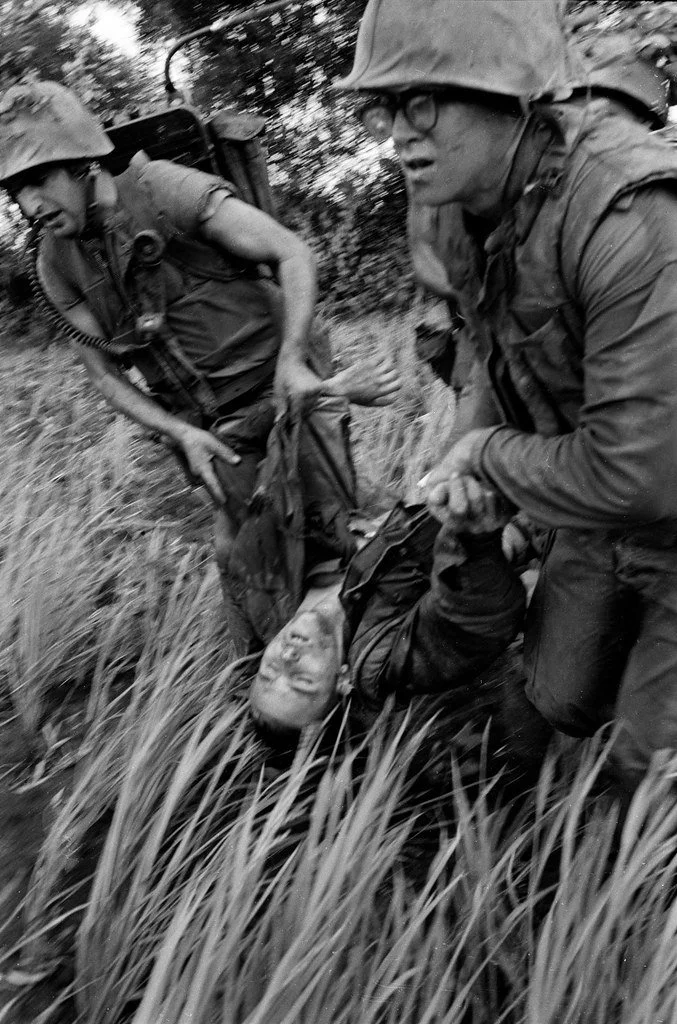Catherine Leroy and the Vietnam War

Catherine Leroy in Vietnam. (Photo: Associated Press)
Times may have blunted our memory of her, but she stands tall as a photojournalist from the Vietnam War and other conflicts - the formidable Catherine Leroy, a French photojournalist whose bravery in the face of conflict and the exceptional quality of her photographs made her an icon of her time. She ventured where few dared, highlighting the truths often ignored, even if it meant stepping onto the battlefields herself.
Undeterred by the dangers that she faced, Leroy carved out a story of resilience and determination that inspired generations. She defied gender norms and societal expectations, armed with a camera and a zeal to narrate the war’s harsh realities. Each picture Leroy composed not only encapsulated a moment in time but also broadened the understanding of the ultimate price of war.
Overcoming adversity
It wouldn't be fair to tell Leroy's story without mentioning the hurdles she had to overcome. Her journey was a battle against all odds, both on the battlefields and in the male-dominated world of photojournalism in the ‘60s.
Surviving on a slim budget, Leroy would hitchhike on military flights to get to the frontline. In an era where women were rarely seen or heard in photojournalism, let alone war photography, she stood out. She was determined to tell the stories that were neglected, to share the faces and voices unseen and unheard.
“Photographs have a sense of being timeless,” She says. “I went to Vietnam with $100 and a Leica camera. I spent my time in the field with marines, and that was my life.”
Documenting chaos for change
To Leroy, the camera was much more than a tool for documentation. It was a means to expose the horrors of war by bringing them directly to the viewers. Her photographs were unfiltered, raw, and often hard to stomach; nonetheless, they were necessary to shed light on the brutal reality of warfare.
The photos were a stark departure from the glorified, sanitized versions of war previous generations were presented with. Each frame was a narrative of its own, encapsulating the essence of human suffering and resilience amid chaos.
Medical evacuation on the battlefield in Vietnam. (Photo: Catherine Leroy for Associated Press)
Through this, Leroy etched her name into history, not only as a pioneering female photojournalist but also as an activist who used her platform to change perspectives and advocate for peace.
Surprisingly, Leroy and her extraordinary work slipped somewhat into obscurity. Her name and work are not as prominent as they should be and may not resonate in the public ear as much as they deserve.
The Human Side of War
Her knack for getting close-ups of soldiers, showing them in their rawest, most vulnerable states, showed the world a different side of the Vietnam War. Where other war photojournalists sought out dramatic, large-scale combat scenes, Leroy opted to humanize the war, capturing moments of fear, quiet strength, and camaraderie amongst soldiers. She reinforced that the war was not just about territories, policies, or politics; it was about people.
Her Photos as Impactful Monuments
In the end, Leroy's photos are not just snapshots of historical moments. They are testimonials of hardships endured, lives lost, and bonds formed amidst chaos. They stand as timeless monuments to brave souls, defining a time in world history that must never be forgotten.
For more than two decades, Joseph L. Murphy has had the pleasure of meeting and connecting with people from all walks of life through photography. He has photographed presidents and heads of state, traversed the winding alleyways of the Fes Medina in Morocco, photographed the sprawling countryside and people that make up Argentina and covered events that have defined the U.S. Most recently, Murphy’s travels have taken him to Cambodia, Mexico, China, Vietnam and Ecuador.
He has spent the past 20 years specializing in agriculture photography for multiple organizations, publications and marketing projects.
A graduate of the University of Iowa, Murphy determined at an early age that his love of photography would shape his vision for life.

